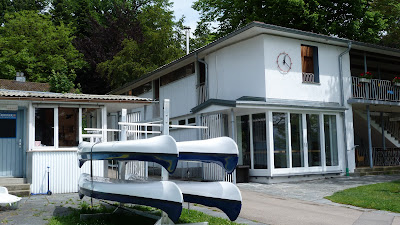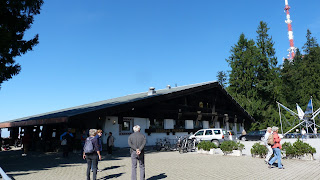Erbauer des Haupthauses Villa Lindenhof war Friedrich
Gruber (1805 bis 1850), der aus einer alten Lindauer Handwerker- und
Patrizierfamilie stammte. Er hatte bis zum Alter von 35 Jahren in Italien als
Kaufmann und Finanzier ein Vermögen gemacht. Ein Lungenleiden war für ihn
Anlass, seine beruflichen Aktivitäten einzuschränken und einen Landsitz in
seiner Heimat bauen zu lassen.
Architekt Franz
Jacob Kreuter (1813 bis 1889) führte dieses Gebäude im italienischen Stil aus,
der an Palladios Villen im Veneto erinnert. Der Lindenhof verfügte auch über
einen landwirtschaftlichen Betrieb (1848 bis 1906), zu dem das Schweizerhaus
gehörte. Erbauer war Johann Christoph Kunkler.
Gestalter des Lindenhofparks war der Friedrich Weyhe
(1775 bis 1846). Die Lindenallee besteht aus Winterlinden, die aus den
Niederlanden stammen.
Die Nachkommen des früh verstorbenen Bauherren verkauften
die Villa im Jahre 1956 an die Stadt Lindau. Diese ließ unter Bauamtsleiter
Hans Häringer im Ortsteil Schachen ein Schwimmbad im Baustil der 50er Jahre bauen.
Bemerkenswert ist, dass das Hauptgebäude um zwei Linden herum gebaut ist. Aufgrund seiner anspruchsvollen zeittypischen Architektur ist das Schwimmbad inzwischen ebenfalls als Denkmal eingetragen.
 |
| Villa Lindenhof |
 |
| Lindenallee |
 |
| Uferbefestigung zum Bodensee |
 |
| Schweizerhaus |
 |
| Fußgängerbrücke zum vom Park zum Schwimmbad |
 |
| Schloss in Umkleidekabine |

































































